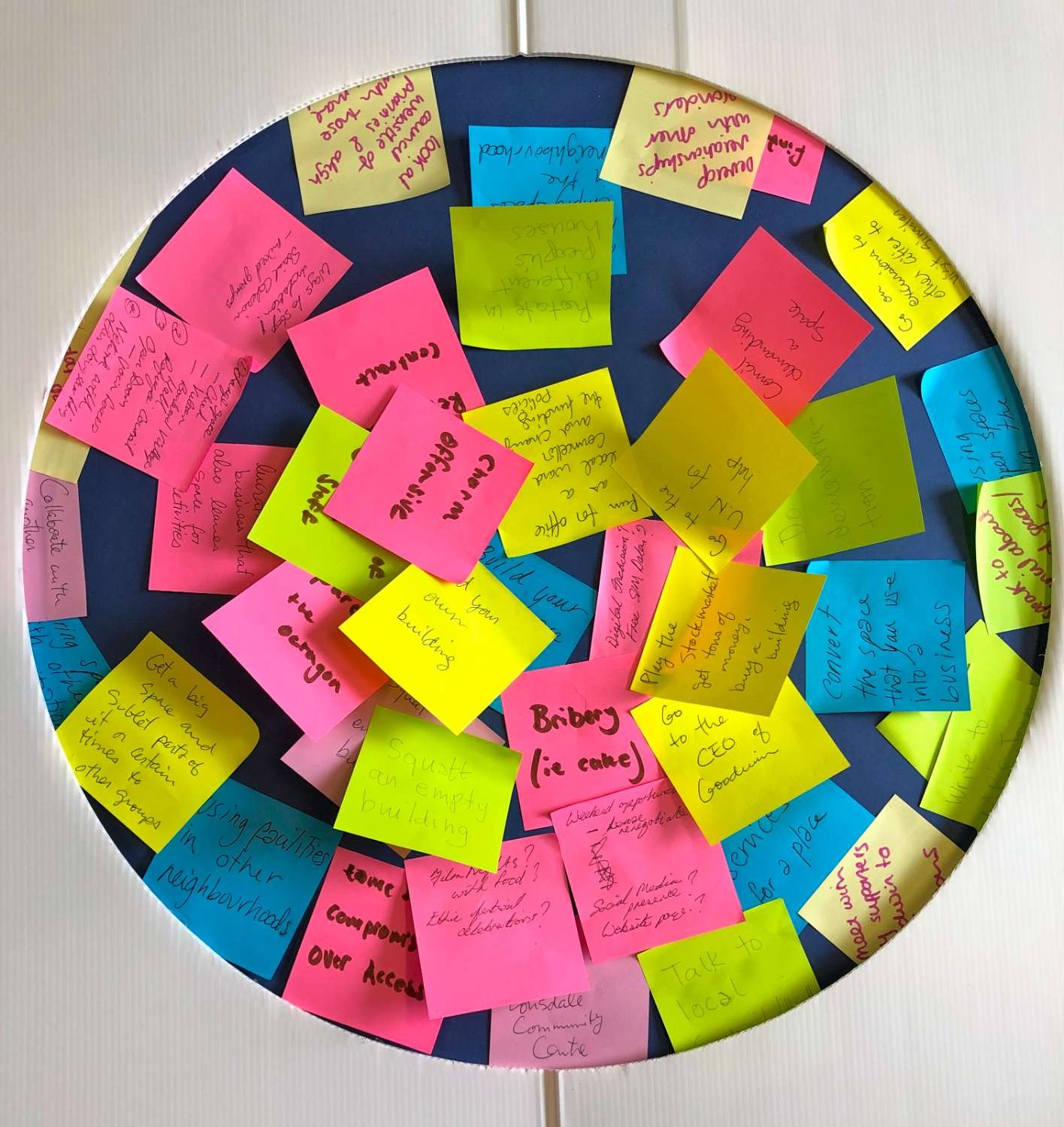Design thinking workshops
LOCATION:
HULL & INTERNATIONALLY
We are always curious about the nuts-and-bolts of what makes alternative, small-scale economic or organizational initiatives flourish or fail.
In order to support the projects in our close environment we started studying a methodology called Design Thinking.
As we see it, Design Thinking is one way powerful economic actors reappropriate the modes of doing coming from artists and designers.
Unlike artists and designers who tend to be precarious, the firms that develop and use Design Thinking have the breathing room to systematize processes, distilling them into simple techniques.
We decided to re-re- appropriate these useful tools, customizing them for the use of grassroots initiatives and small scale budding economic projects.
We offered this to people in our close environment, providing a series of workshops where we accompany them in researching and prototyping.
What we saw was that while mainstream uses of Design Thinking instrumentalize its techniques, funneling all of the effort into selling a product or service for mass consumption, if taken at face values, these are exploratory techniques that open us up to new surprising possibilities.
One anecdote illustrates this. It took place while Anna was pregnant: An hour before one of the Design Thinking workshops, Anna started researching oxytocin, a hormone central to childbirth. Cursory research revealed that the hormone is one related to bringing about something new, and that it is released in situations of connection to others.
We then used oxytocin metaphorically at the workshop to connote how a close network of entrepreneurial projects, supporting each other, might respond to the fear and alienation participants felt towards the economy and their place within it.
During ideation sessions we sometimes circle the most crazy, surreal and unexpected ideas
COMPOST
Our design thinking workshops always involve several different projects in conversation with each other. They all have the common denominator of being projects aiming to create social benefit while creating livelihoods for those involved. The room is set up in an inviting way with tools and toys (which are tools) and snacks, everything needed to enable the conversation going in unexpected directions. We do several sessions aiming to create solidarity between the projects, a situation where they nourish each other in ways we can’t predict. Soon, ideas, questions, challenges and changes start appearing.
GERMINATE
After several conceptual twists and turns of the research process ideas become clear and concise. We then invite external people to help us respond to questions and challenges. Together with them we generate a lot of ideas, some of them subversive, crazy, innovative. After these sessions, called ‘ideation’, digestion can be slow, we start metabolizing all of the elements that might help us rethink each one of the projects.
CARE
We create non-judgemental spaces. All the voices are listened to with care and respect. We embrace error and failure as an essential part of our learning and support projects through them.
More circling of ideas during an ideation session.
SUPPORTED BY













